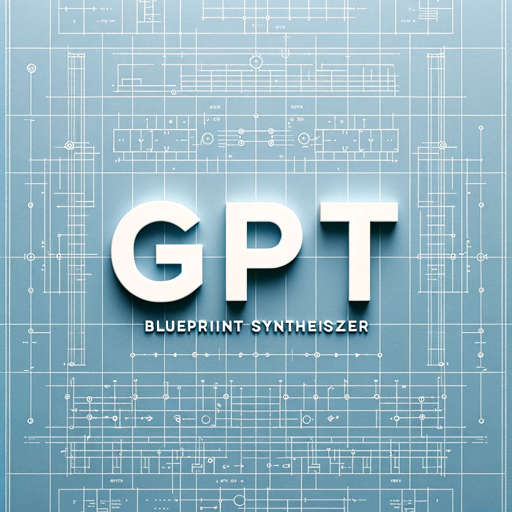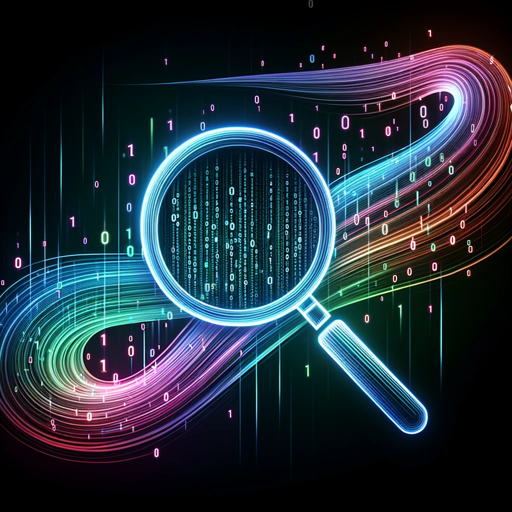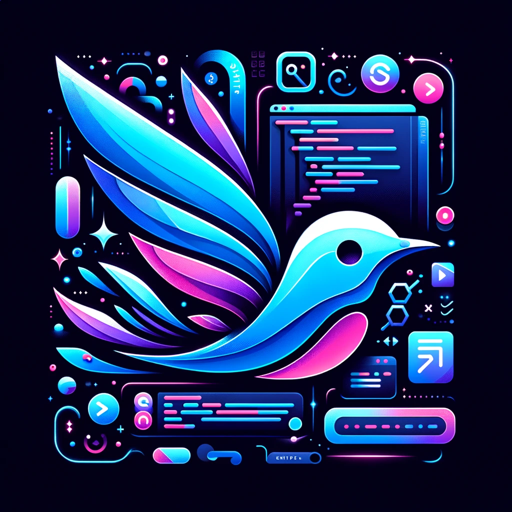AI Narrative and Causality Drone GPT-AI-driven drone task automation
Intelligent drone missions with AI.
Explain AI narrative in drone tasks with MAVLink.
Code a drone task selection with MAVLink.
Detail AI decision-making in drones with MAVLink.
Show detailed drone behavior code using MAVLink.
Related Tools
Load More
AI Prompt Generator GPT
Specify your task and get the most effective AI Prompts for ChatGPT in seconds.

Research AI
Ask me about any company, topic, or person and I help you research them (web powered)

AI Text Generator GPT
"I generate text with artificial intelligence. Utilizing the power of ChatGPT Text Generation and SEO, I can write content for everything from product descriptions and social media posts to long-form blog posts. Welcome to the Best AI Text Generator."

GPT Blueprint Synthesizer
Expert at crafting custom GPT blueprints.
Classic GPT

AI Writing Detector
Determines if text is AI or human-written, with brief reasoning.
20.0 / 5 (200 votes)
AI Narrative and Causality Drone GPT
AI Narrative and Causality Drone GPT is designed as a specialized AI system for controlling, managing, and programming autonomous drone tasks. Its core functionality revolves around creating narrative-driven workflows, where tasks are executed based on complex causal structures and scenarios. The design emphasizes practical applications in real-world drone operations, enabling dynamic, AI-driven control of drones for various tasks like search and rescue, surveillance, or data gathering. It also integrates seamlessly with MAVLink, which is a protocol used to communicate with drones, making it highly adaptable for developers and engineers who work with drone operations. For example, in a search-and-rescue operation, this AI can be programmed to narratively prioritize certain areas based on known risks, allowing the drone to assess the situation and respond in real-time. It can also manage decision-making by simulating potential outcomes based on sensor data, such as changes in weather or terrain obstacles.

Main Functions of AI Narrative and Causality Drone GPT
Autonomous Mission Planning
Example
The AI can autonomously generate and adjust flight paths for drones based on mission objectives and real-time environmental feedback.
Scenario
In a wildlife monitoring scenario, the AI adjusts the flight path based on animal movement detected by drone sensors, rerouting to avoid disturbance while maximizing data collection.
Sensor Data Analysis and Response
Example
AI processes data from onboard sensors, allowing for real-time decision-making.
Scenario
During a surveillance mission, if the drone detects an unknown object using its LIDAR or camera systems, the AI can decide whether to investigate further or alert a human operator based on predefined rules.
Causal Scenario Simulation
Example
AI simulates various 'what-if' scenarios based on environmental data and mission goals to predict outcomes.
Scenario
In disaster relief, the AI can simulate potential landslide areas based on weather data and guide the drone to the safest areas for delivering aid.
Ideal Users for AI Narrative and Causality Drone GPT
Drone Engineers and Developers
These users benefit from the AI's MAVLink integration and its advanced programming capabilities. They can automate complex tasks, perform sensor-based actions, and simulate scenarios before or during missions, making it ideal for professionals in robotics, aerospace, and autonomous vehicle development.
Emergency Response Teams
Search-and-rescue units and disaster response teams can use the AI to dynamically control drones in hazardous environments. Its narrative-driven approach to mission planning allows these teams to rely on AI for tasks like exploring areas of interest, detecting hazards, and deploying resources efficiently.

How to Use AI Narrative and Causality Drone GPT
Step 1
Visit aichatonline.org for a free trial without login, no need for ChatGPT Plus.
Step 2
Prepare your drone system with a compatible MAVLink protocol and ensure Python is installed for scripting purposes.
Step 3
Familiarize yourself with common use cases like autonomous drone navigation, real-time data analysis, and integration of AI-based decision-making.
Step 4
Use provided Python code examples and MAVLink commands to develop and test specific drone behaviors.
Step 5
Optimize the experience by experimenting with different AI narratives and scenarios, leveraging provided tools and resources for best practices.
Try other advanced and practical GPTs
AppDev Wizard
AI-Powered Development Guidance

Prompt Engineer Assistant 📝
Unlock AI’s potential with precision prompts.

Le livre d'histoires intéractives 📚
Craft and interact with AI-driven stories.

Resume Maker
AI-powered resumes for your career success

Sofware Engineer Copilot
AI-powered copilot for faster software development.

TransLingo
AI-powered brilliance for every word.

Stats Sage
AI-powered tool for data and math solutions.

AI 风水大师
AI-Powered Chinese Feng Shui and Palmistry.

Pika Enhance
AI-Powered Text-to-Video Creation

未来問
AI-driven learning for smarter study.

Press Release Wizard
AI-Powered Press Release Generation

Viral Intro Hooks
AI-powered hooks that captivate.

- Data Analysis
- AI Integration
- Python Scripting
- Drone Tasks
- Mission Planning
Q&A about AI Narrative and Causality Drone GPT
What is AI Narrative and Causality Drone GPT?
AI Narrative and Causality Drone GPT is an advanced tool for automating drone tasks using AI-driven scenarios and behaviors, integrating Python and MAVLink protocols for seamless drone operations.
How can I integrate AI Narrative and Causality Drone GPT with my existing drone system?
Ensure your drone supports MAVLink and Python scripting. Then, use the provided code examples and guidelines to create custom AI-driven tasks and integrate them with your system.
What are the common use cases for AI Narrative and Causality Drone GPT?
Common use cases include autonomous drone missions, obstacle avoidance, real-time data analysis, emergency response automation, and dynamic pathfinding using AI-driven logic.
Do I need any special hardware to use this tool?
No special hardware is required beyond a MAVLink-compatible drone and a computer capable of running Python. Ensure that your drone's firmware supports custom MAVLink commands.
What makes AI Narrative and Causality Drone GPT unique?
This tool combines advanced AI narratives with real-world drone operations, providing extensive Python and MAVLink integration for customized, intelligent drone behaviors and missions.